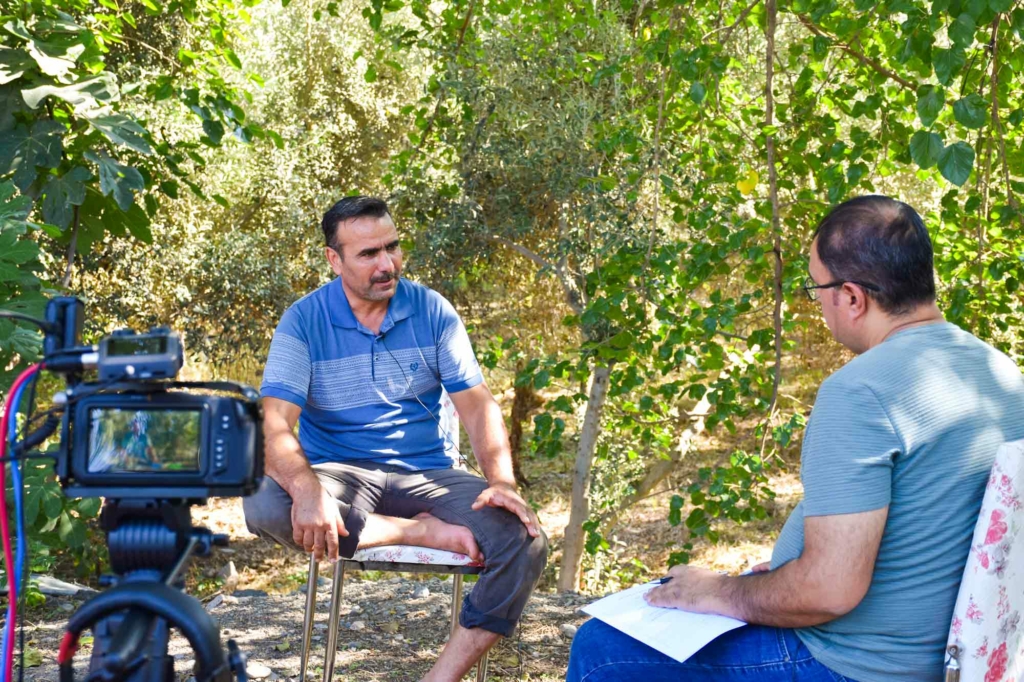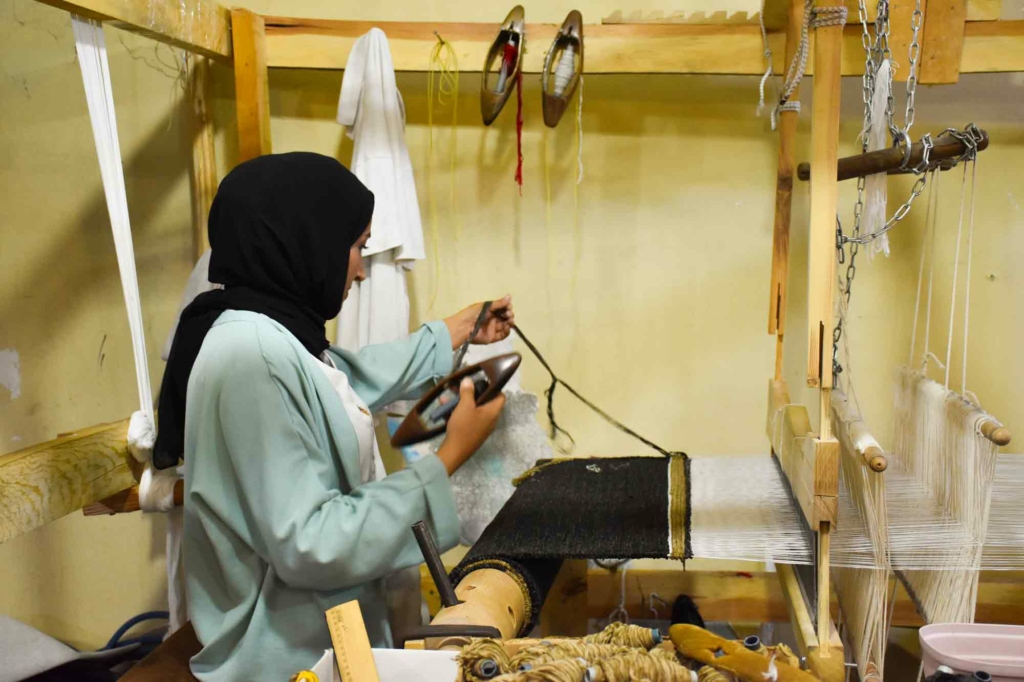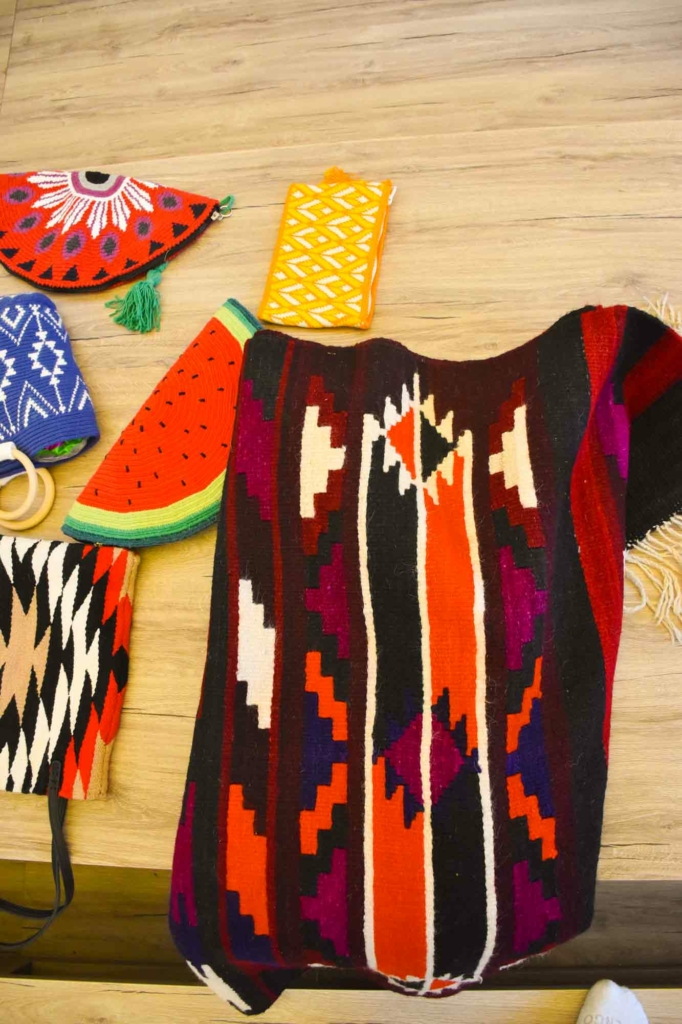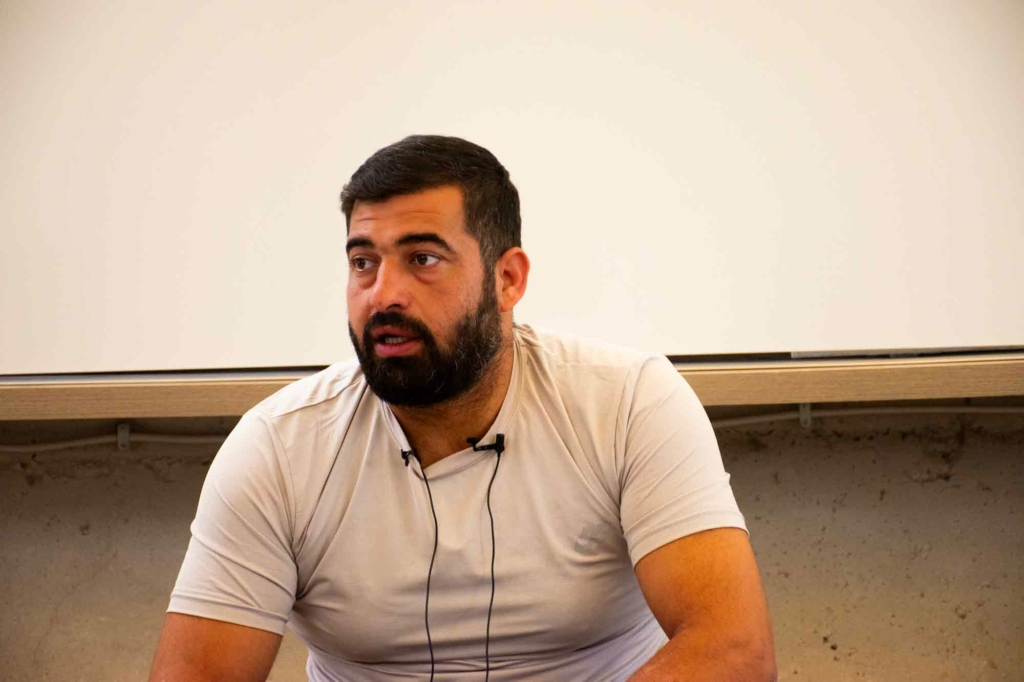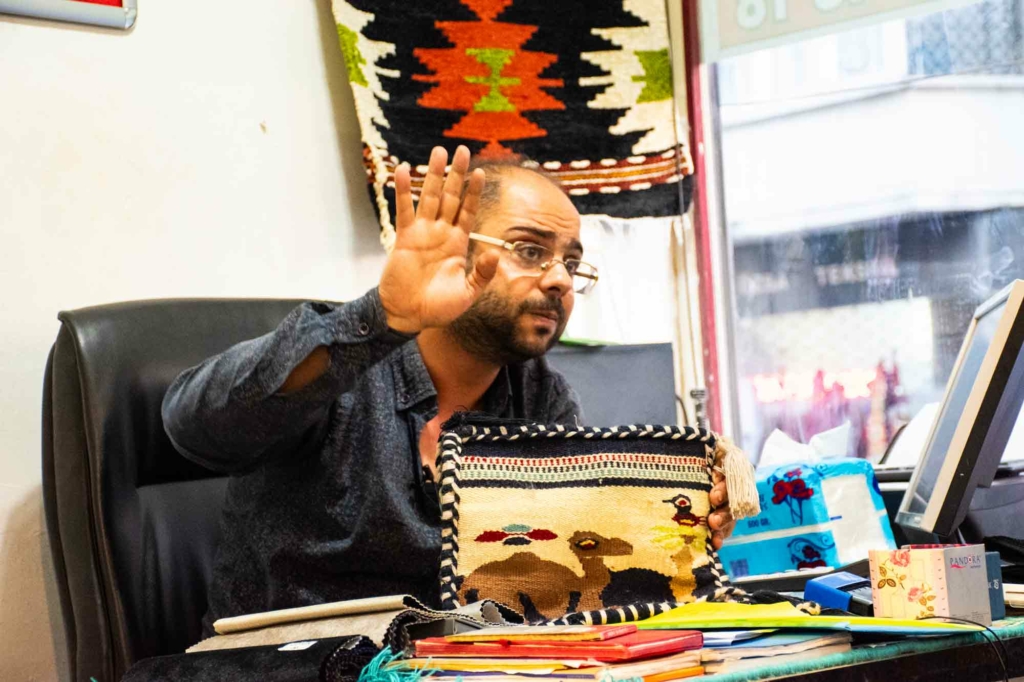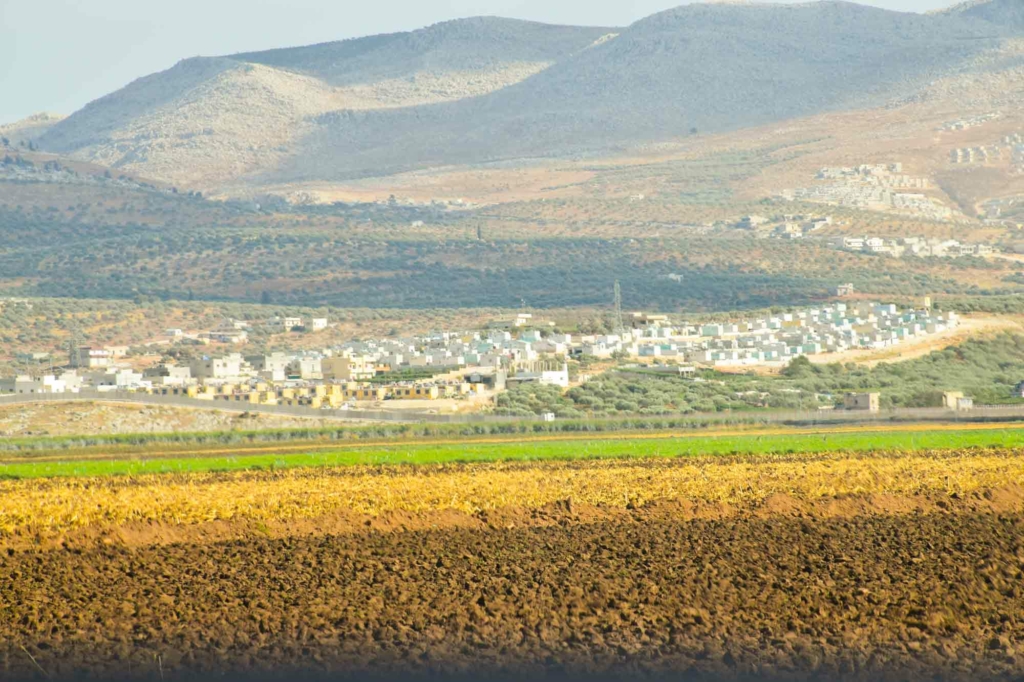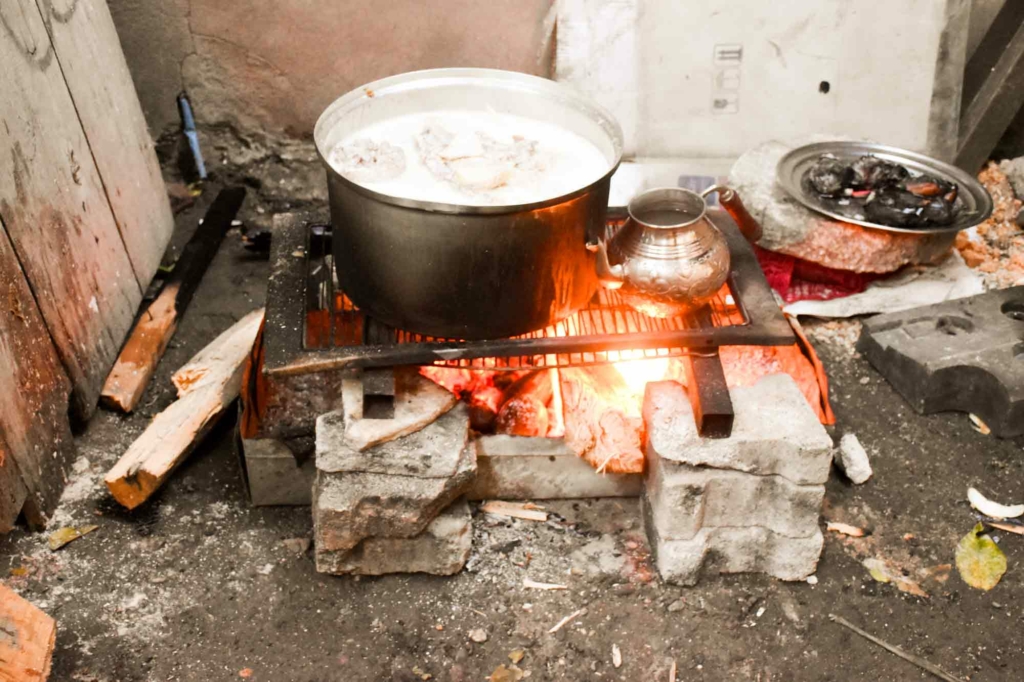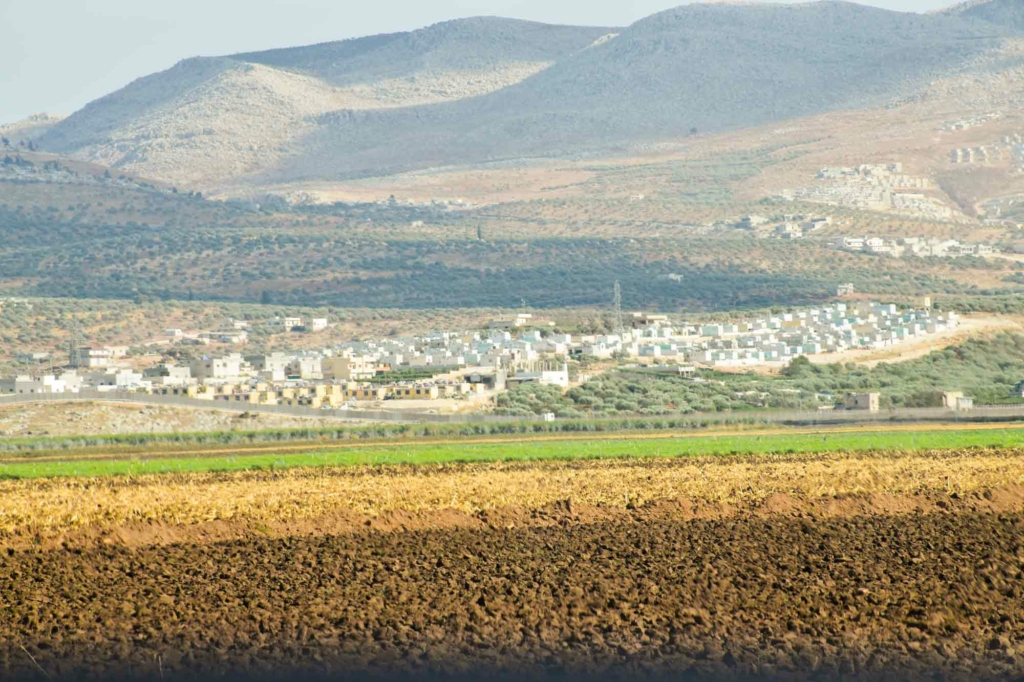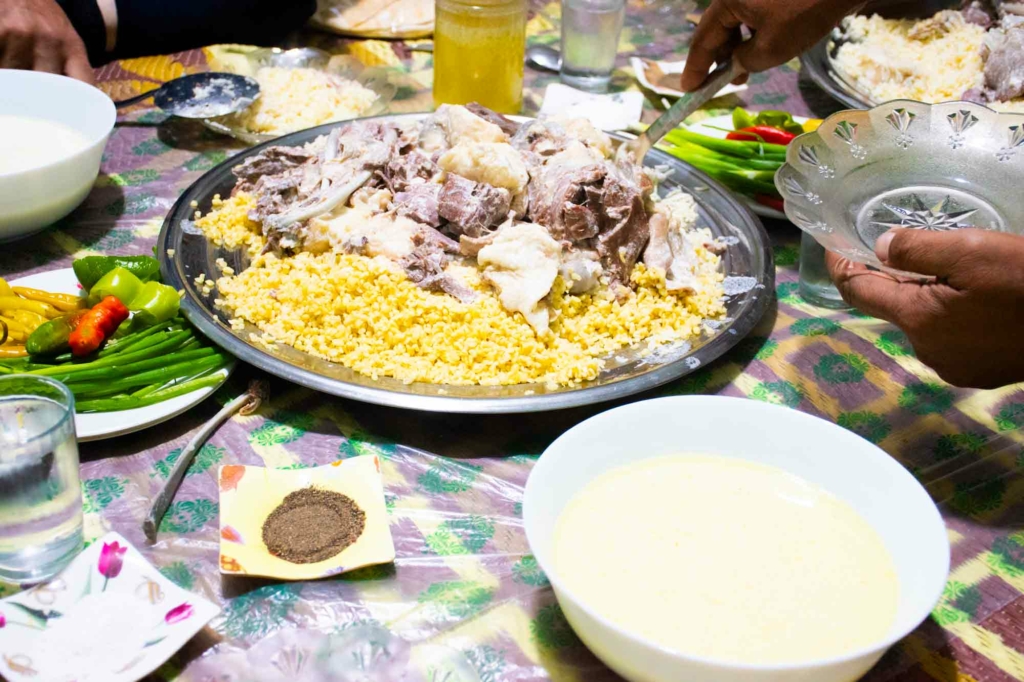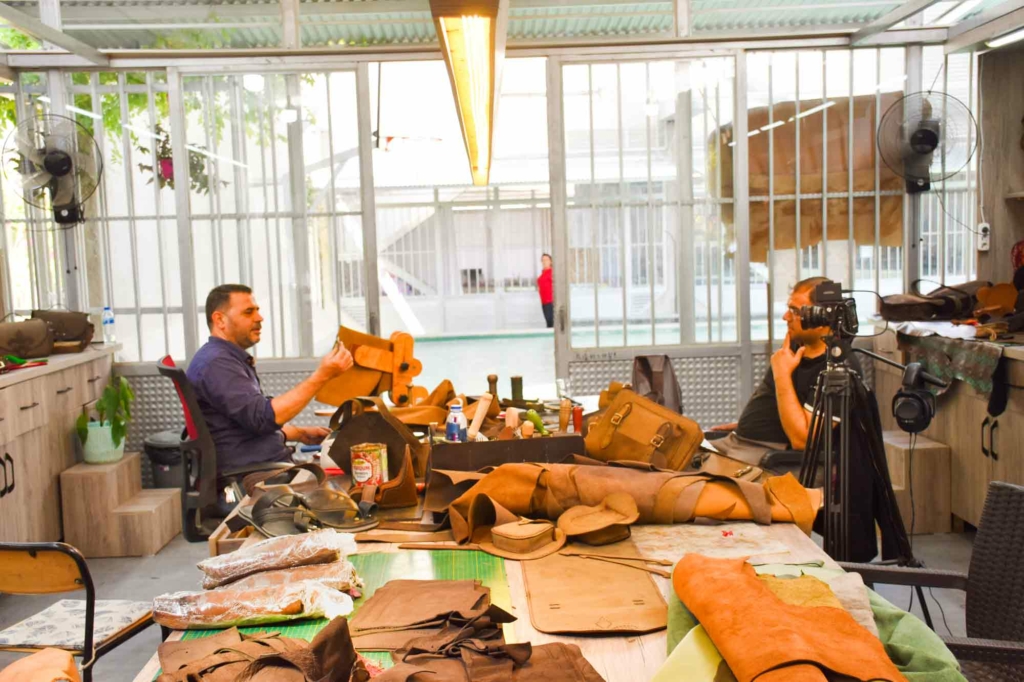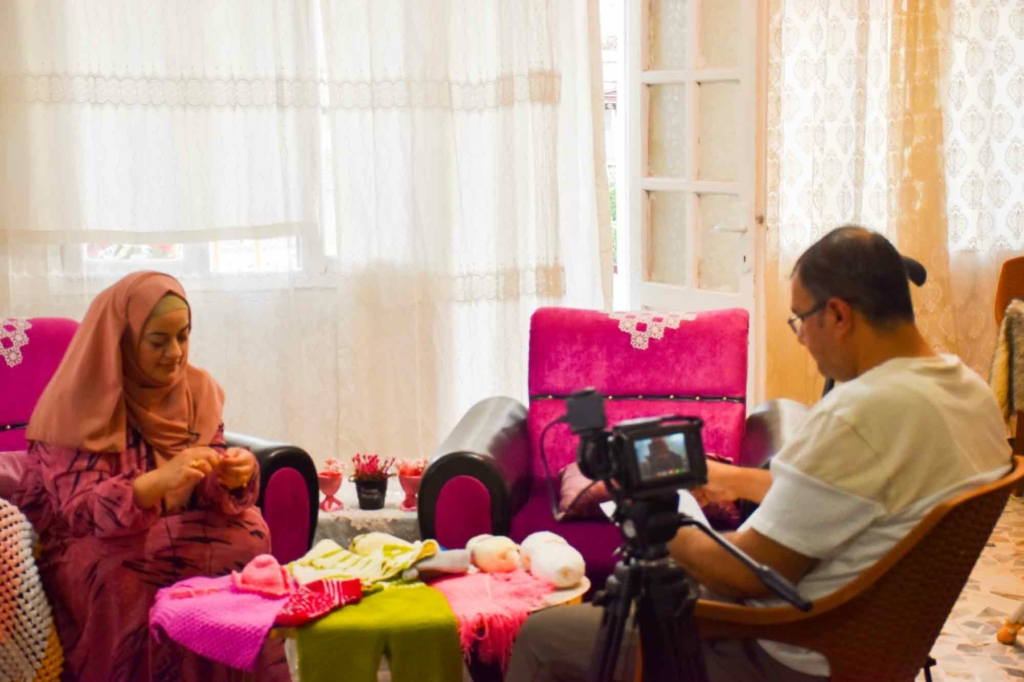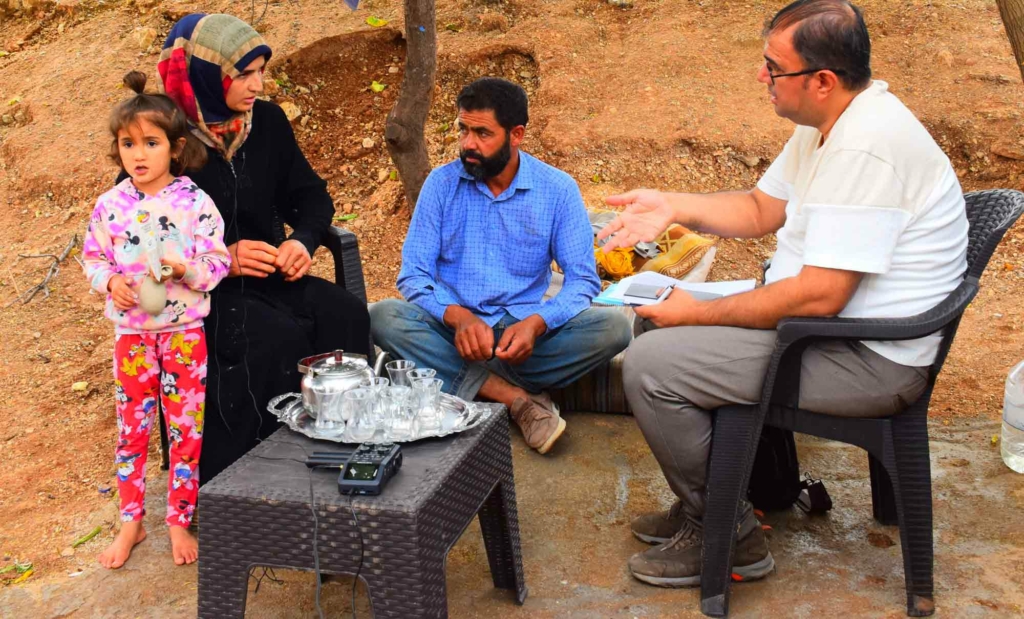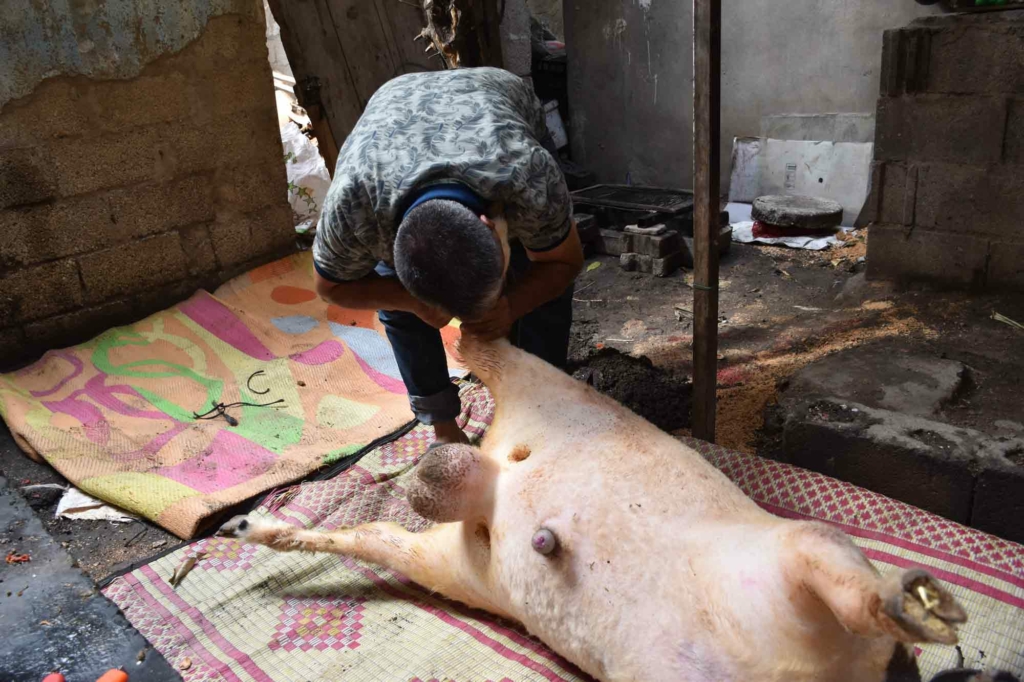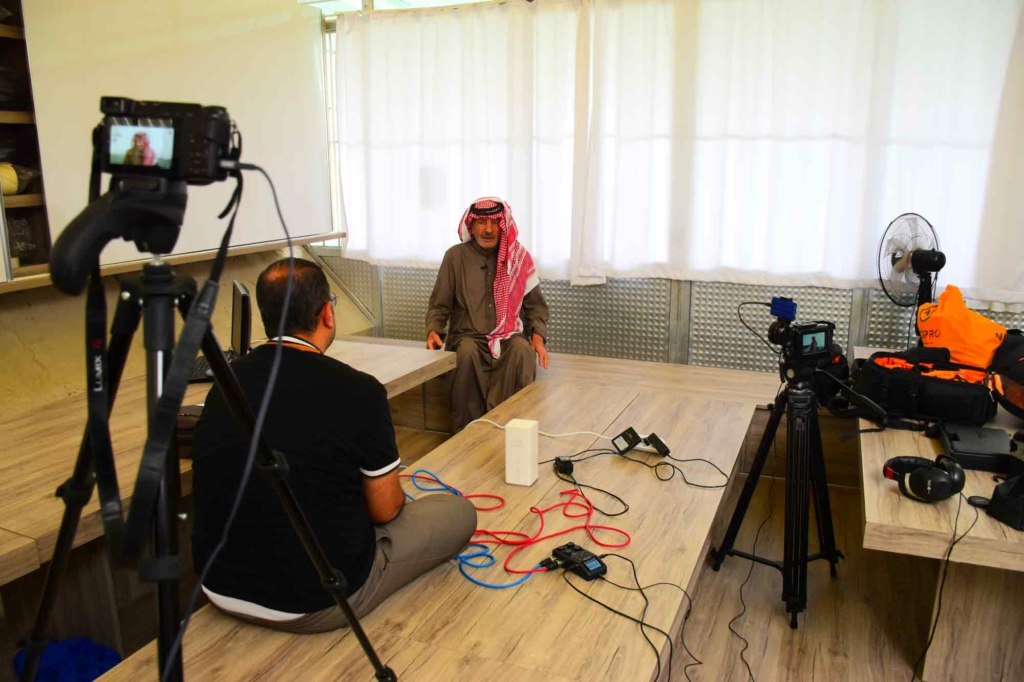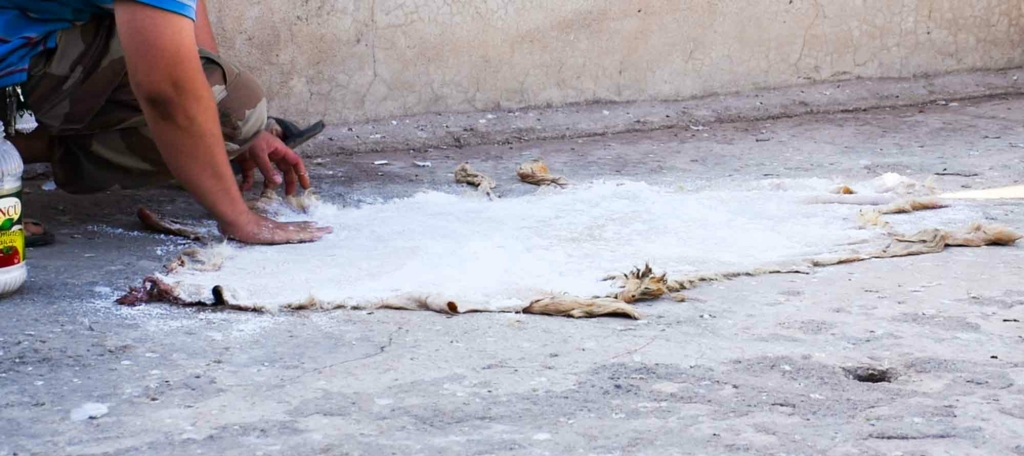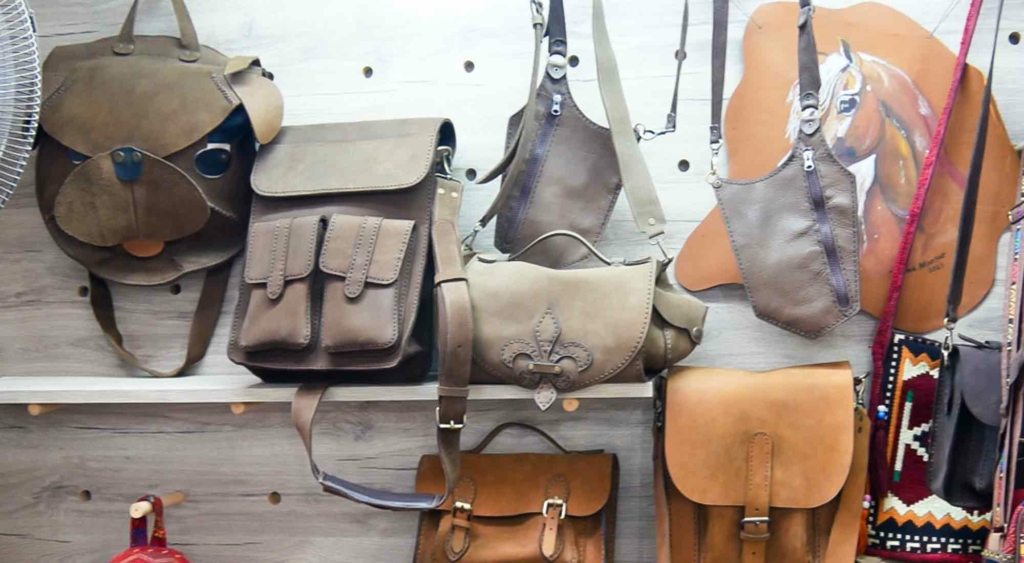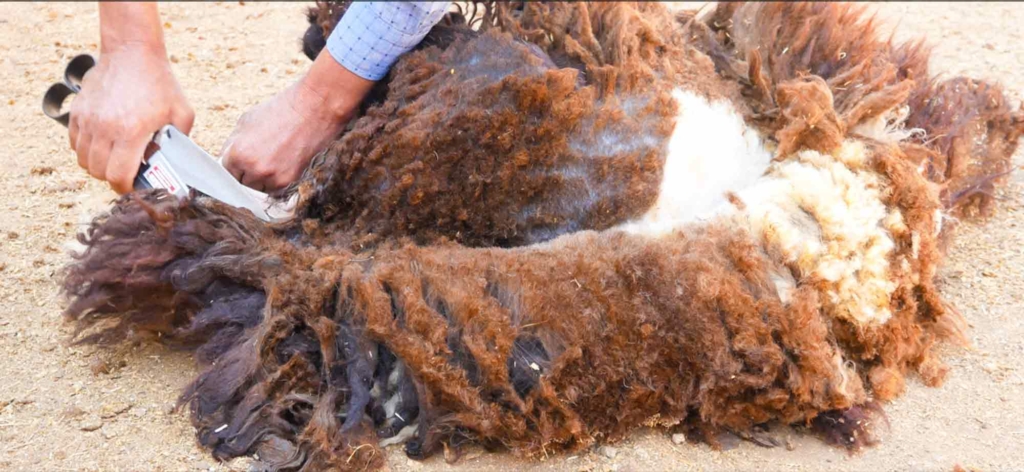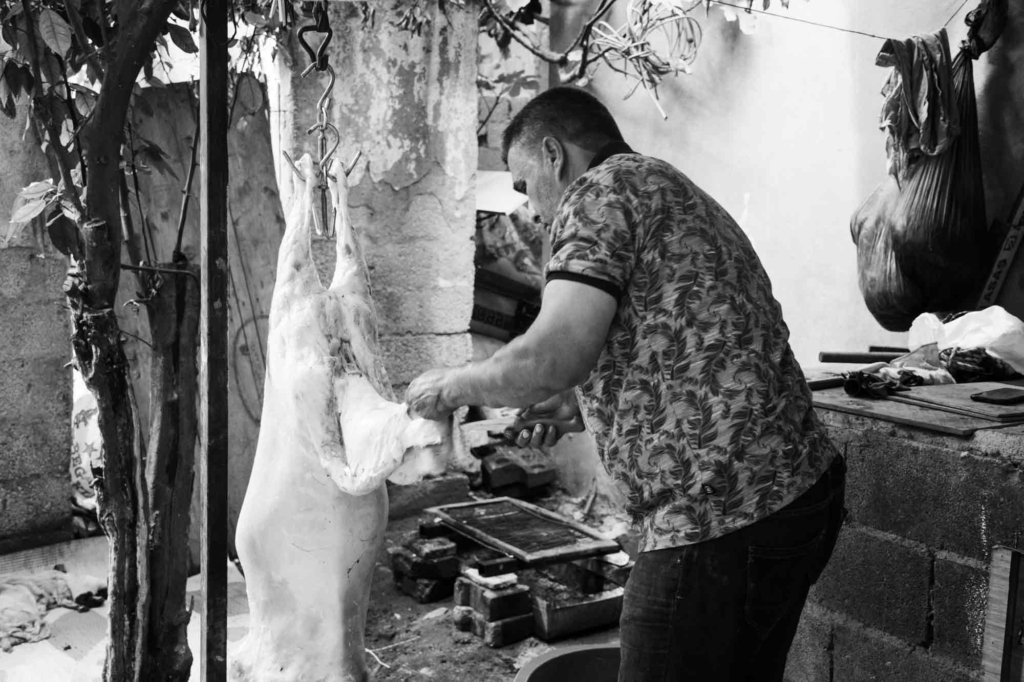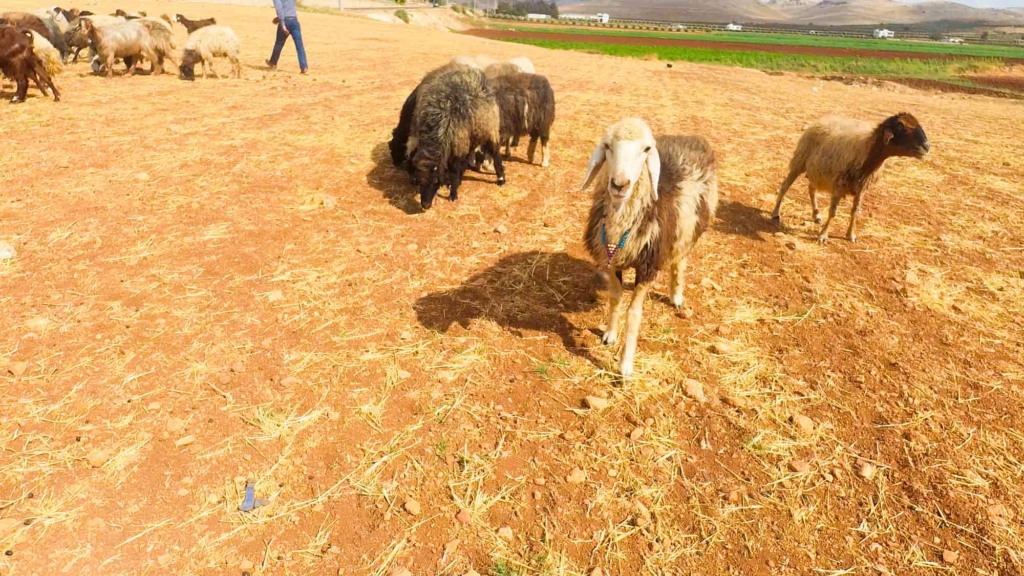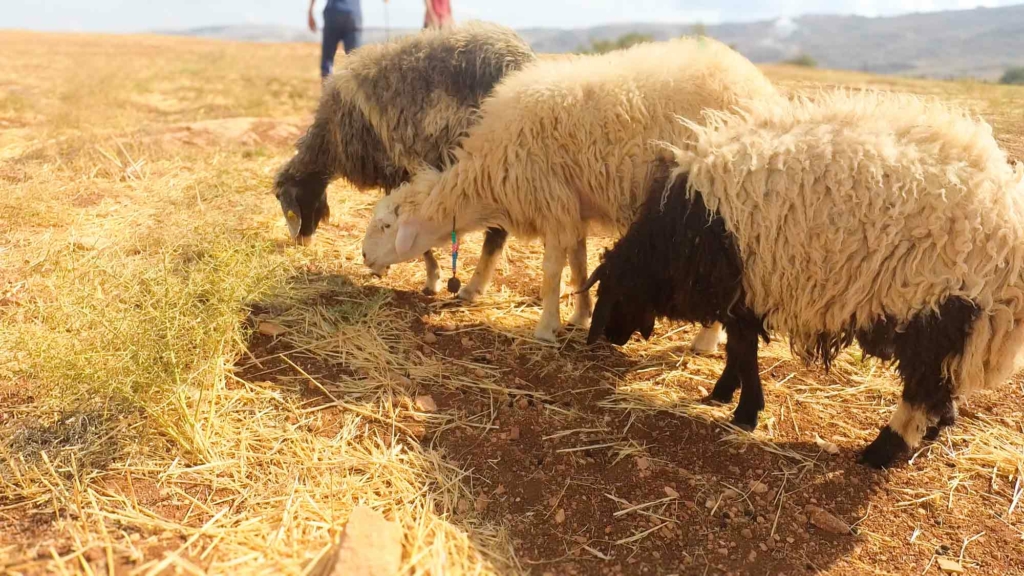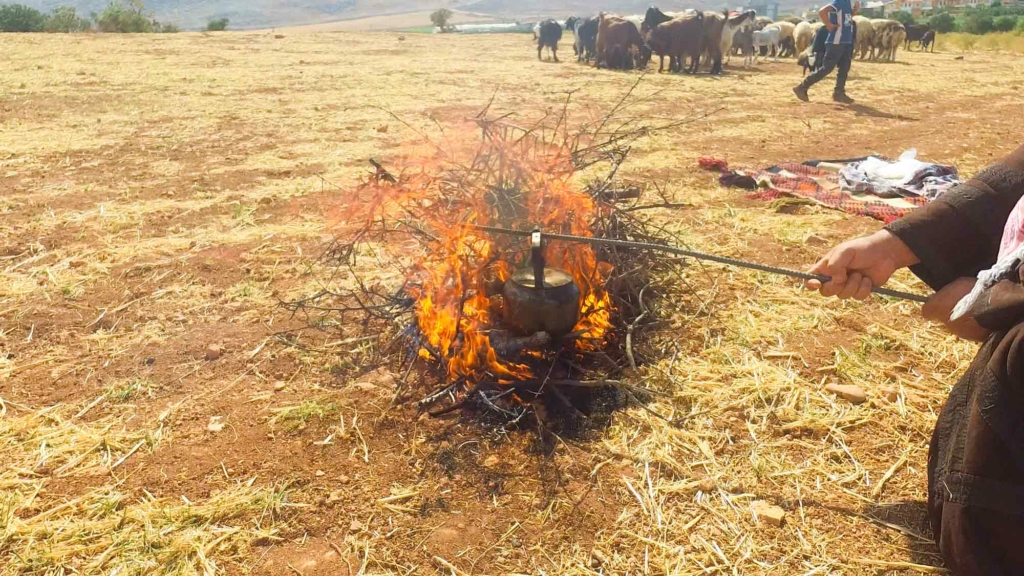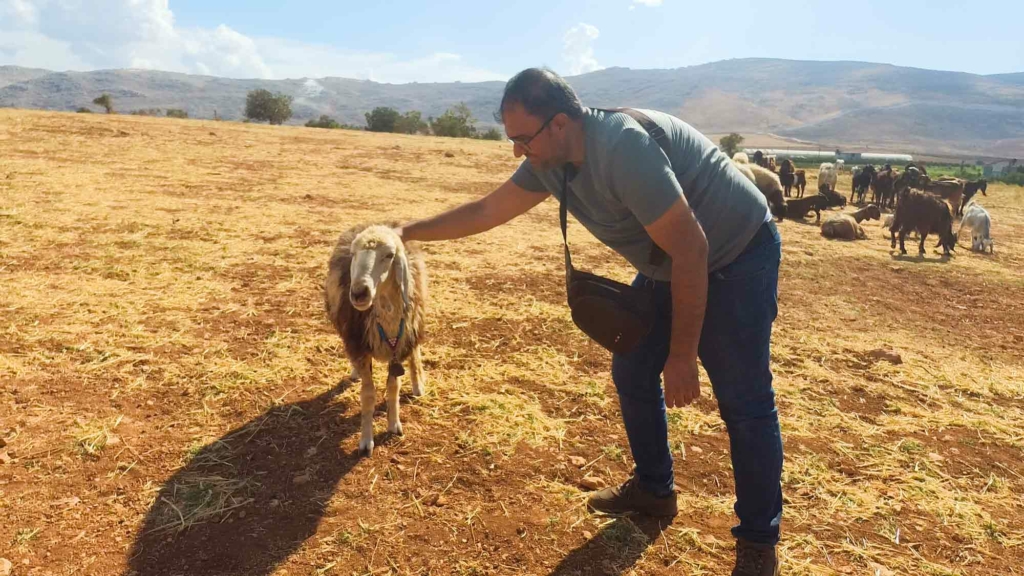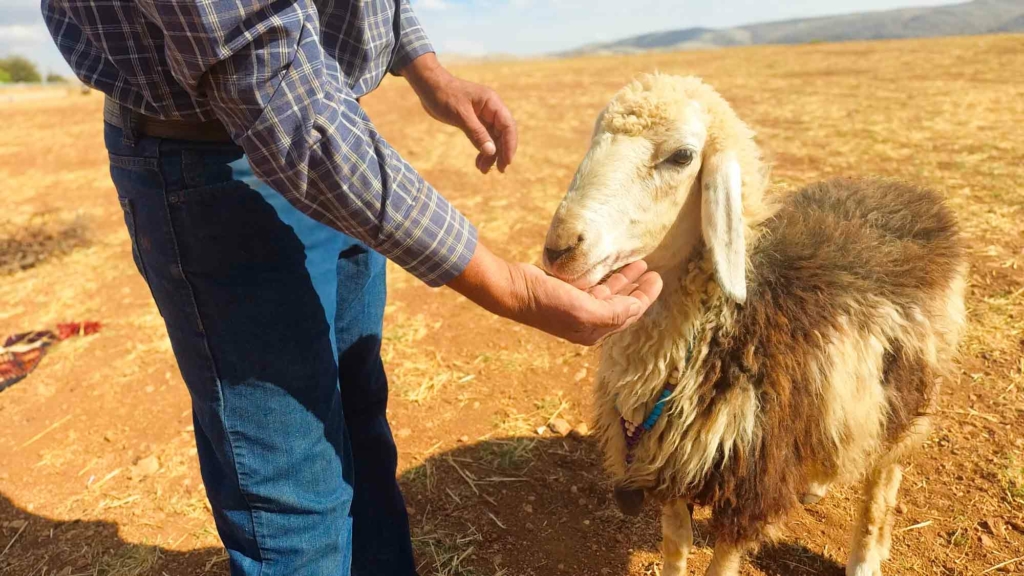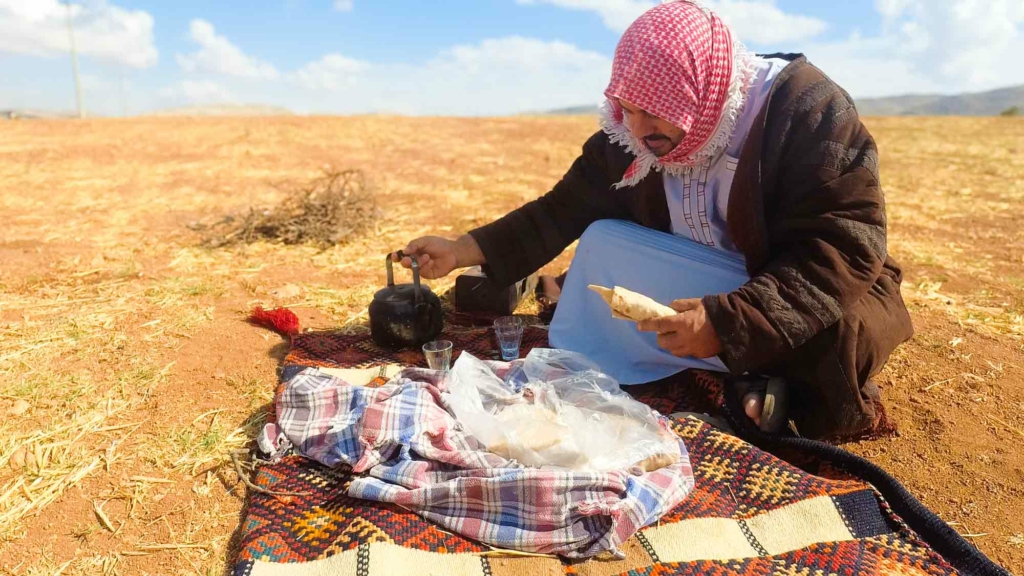
The gap that emerged in 2015 due to the displacement and abandonment of the city of Palmyra in Syria is the focus of this initiative. It aims to document an aspect of cultural practice in Palmyra and its surroundings represented by the crafts and professions related to the unique products of Awassi sheep in the Syrian Badia. This effort seeks to preserve an element of Palmyra’s tangible and intangible heritage from extinction through academic and systematic documentation.
The initiative centers on the Palmyrene population in the diaspora, highlighting the works of professionals, including men and women. It integrates folklore studies, community engagement, oral history, and archival research. The objectives include:
- Documenting the heritage of the Awassi sheep in the Palmyrene desert and Syrian Badia.
- Creating a documentary archive of photos and podcasts on all materials and crafts related to Awassi sheep products.
- Highlighting the role of women in these crafts.
- Establishing a blog to promote scientific articles and publications about significant aspects of Palmyra’s culture.
The work team has begun researching sources and references related to the project before its commencement. Considering the global experience in studying and documenting Awassi sheep and their products. There hasn’t been another research that documented Awassi sheep products or any other livestock in the diaspora country.
Surveys of Palmyra people in Turkey
This survey research represents a critical domain within applied social research. Through the course of this study, field ethnographic personal interviews emerged as the most suitable survey method. Drawing from the main researcher’s familiarity with his local community in Tadmur/Palmyra, dispersed across several cities in southern Turkey, and employing the snowball sampling method, the research team sought out individuals possessing pertinent knowledge about Awassi sheep and related topics.
Initially, question lists were developed pertaining to various research themes, with each theme having its own set of questions. For instance, a distinct question list was crafted for the profession of shepherding. Subsequently, a roster of potential interviewees and participants for photography workshops was compiled. Following discussions and consultations led by the primary researcher, Hasan Ali, individuals possessing expertise in the research areas were identified.
Hatay province, situated on the Turkish-Syrian border and centered around the city of Antakya, which experienced an earthquake on February 6, 2023, was chosen as the primary destination for fieldwork due to the concentration of key interviewees in that region. Scheduled appointments were made to engage with each of these individuals. Subsequently, the research team visited Gaziantep province, followed by the city of Osmaniye situated between Hatay and Gaziantep.
Each interviewee was requested to sign a data publication consent form, provided in both Arabic and English.
Field work (trips and interviews)
The research team embarked on visits to three Turkish provinces: Hatay province, with visits to the city of Reyhanlı/Hatay where nine interviews were conducted, and the city of İskenderun where two interviews were conducted. Subsequently, they proceeded to Gaziantep province where two interviews were conducted, followed by a brief stop in the city of Osmaniye where one interview was conducted. In total, the research team conducted 14 interviews.
Summary of activities:
Hatay, Gaziantep, and Osmaniye Trip (September 30, 2023, to October 9, 2023):
Upon conducting surveys and reviewing weather forecasts, the research team decided to expedite their travel plans to avoid the rainy season in Turkish cities, which could disrupt workshops and outdoor photography, particularly for grazing practices. The team, consisting of main researcher Hassan Ali, research assistant Lamis Kadah, and photographer Ahmed Al-Khani (Lamis Kadah husband), opted to rent a cost-effective private taxi for mobility in southern Turkey. This decision was made considering the closure of Hatti Airport near Reyhanlı, necessitating travel to Adana Airport, approximately 250 km away.
On September 29, 2023, the team departed from Istanbul and arrived in Adana, where they purchased necessary supplies before continuing to Reyhanlı. Accommodations were arranged at the Prince Hotel for nine nights, with two rooms booked—one for Hasan Ali and one for Lamis and Ahmed. Their stay in Reyhanlı was divided into two periods: seven nights initially, followed by a two-night visit to Gaziantep with a brief stop in Osmaniye. They returned to Reyhanlı for two final nights to complete filming related to leather tanning.
On September 30, 2023, the team visited Murad, an Awassi sheep breeder from the Al-Uqaydat tribe in the Syrian desert, and his shepherd Khaled Al-Saleh Al-Tadmuri. Filming commenced on October 1, 2023, with the shepherd leading his flock to grazing areas near the Turkish-Syrian border, offering clear views of neighboring Syrian towns. Photography continued for approximately six hours, capturing scenes of the shepherd tending to his flock and preparing his food.
The following day, the team arranged to photograph Muayyad Ahmed, a displaced person from Palmyra, with an Awassi sheep in Reyhanlı.
On October 2, the team accompanied the butcher Moayyad Ahmad to bring one of the Awassi sheep to conduct photography work in Moayyad’s garden. The shearing process lasted approximately two hours. Afterward, they decided to prepare “Al-Karma,” the renowned dish of Palmyra and the surrounding desert, in Moayyad’s house. By evening, the food was ready, and Muayyad invited friends from Palmyra to share the meal.
On October 3, the team began searching for a suitable location to conduct video interviews with experts in the research topics. With the help of their professional acquaintance Waddah Al-Ahmad, they secured a hall at the Taiwanese Center in Reyhanlı for three days to conduct interviews.
Later on, October 3, they photographed Wadah Al-Ahmad, a shoemaker and leather bag maker, as he demonstrated traditional bag-making techniques. They also conducted a video interview with Wadah about his profession.
On October 4, the team conducted a video interview with Mr. Murad, the Awassi sheep breeder, about his experience in raising Awassi sheep. They also interviewed his wife, Mrs. Lina Al-Khaled, an expert in making cheese from sheep’s milk.
In the evening of October 4, they photographed Mrs. Rawaa Fares, a knitter of woolen clothes, as she demonstrated the process of making a child’s hat. They conducted a video interview with Mrs. Rawaa about her profession.
On October 5, they returned to Mr. Murad’s farm to photograph the stages of the wool shearing process. Later, they conducted a photography workshop for Mrs. Hajar Al-Shafi, a handloom worker, and conducted a video interview with her.
On the same day, they conducted video interviews with several individuals knowledgeable about Awassi sheep and related professions, including the shepherd Khaled Al-Saleh and leather tanner Khaled Al-Jaber.
On October 6, they conducted video interviews at the Taiwanese Center with the butcher and cook Muayyad Al-Ahmad, who spoke about the butcher’s profession and famous dishes cooked with Awassi sheep meat in Palmyra and the Syrian desert.
During the evenings and sometimes early mornings of all those days, the team visited Mr. Khaled Al-Jaber’s leather tanning workshop to observe the stages of tanning Awassi sheepskins. They witnessed the transformation of the skins into smooth leather, which is used in industries for making shoes, bags, and leather supplies like shakwa. Additionally, they observed the process of tanning the skins into Al-Ja’ed, a form used for making furs, linings for traditional coats called Ebteea, and Farwa.
Mr. Khaled continued his work on the tanning stages until October 10. However, the team was compelled to return to Reyhanlı on the nights of October 9 and 10, following their departure for Gaziantep for three days and two nights.
Travel to İskenderun/Hatay for Interviews
On October 6th, the research team embarked on a journey to the city of Iskenderun, located approximately 70 km west of Reyhanlı along the coast of the Gulf of Iskenderun in the Mediterranean Sea. Iskenderun, a city within the Hatay province, was the destination for conducting two significant interviews with sheep breeders originating from Palmyra. These individuals, displaced from Palmyra due to ongoing conflicts, have resettled in Iskenderun, where they engage in buying and selling livestock to local breeders in the surrounding countryside, notably in the city of Alexandretta.
Interviewees:
Muhammad Al-Abdullah: Mr. Al-Abdullah shared insights into his extensive experience in the trade of Awassi sheep, discussing the intricacies of buying and selling these prized animals. Moreover, he provided valuable perspectives on the art of raising Awassi sheep, drawing from his wealth of firsthand knowledge and expertise.
Muhammad Fahd: Mr. Fahd, another participant, is not only a seasoned breeder of Awassi sheep but also a skilled musician proficient in playing the Rebaba or Rebab, a traditional musical instrument. During the interview, he graciously treated the team to a performance on the Rebaba, evoking the spirit of traditional music that once echoed across the Syrian desert. His performance was accompanied by captivating storytelling, offering glimpses into the rich cultural heritage shared among Awassi sheep shepherds in Palmyra.
Travel to Gaziantep:
On October 7, the research team, embarked on a journey by car to Gaziantep, situated approximately 200 km northeast of Reyhanlı. In Gaziantep, they encountered a traditional loom still operational, owned by Mr. Muhammad Kassim, a Syrian professional displaced from Aleppo. Despite challenges, Mr. Muhammad continues the ancestral profession of weaving. They persuaded him to allow Mrs. Hajar to be photographed as she demonstrated the initial stages of traditional rug making, a process that takes several days to complete. Mr. Muhammad also shared insights into the history of weaving and the current state of the profession in Syria and diaspora countries.
Travel to Osmaniye:
The following day, October 8, the team journeyed to Osmaniye, near Gaziantep, approximately 100 km to the west. There, they interviewed Mr. Amer Abdel Latif, an Awassi sheep breeder from Palmyra, about his experiences and knowledge regarding Awassi sheep. They visited his farm outside Osmaniye, where he raises sheep for trade, including a significant number of Awassi sheep. An outdoor video interview was conducted with Mr. Amer at his farm.
Cultural Awareness Efforts:
During the evenings of travel days, the main researcher organized meetings with displaced individuals from Palmyra in cafes or homes, aiming to raise awareness about Palmyra’s heritage, both cultural and natural. These discussions emphasized the importance of preserving Palmyra’s heritage and the valuable knowledge carried by displaced individuals, considered part of Palmyra’s intangible heritage.
Expanding Horizons: Enhancing Palmyrene Voices with Arabic Version, Blog, and Podcast Integration (https://palmyrenevoices.org/)
SoundCloud Podcast Channel Integration: By creating a SoundCloud channel connected to your website, you’re expanding your platform to include audio content. Users can listen to podcasts related to Palmyra’s history, stories, and cultural significance. This adds a dynamic element to your platform and caters to users who prefer audio content.
Arabic Version of the Website: By providing an Arabic version of the entire website, you’re ensuring better accessibility and exposure for Arabic-speaking audiences worldwide. This demonstrates inclusivity and a commitment to reaching a diverse audience.
Blog Section: Introducing a blog section is an excellent way to share in-depth articles about Palmyra, its history, culture, and current events. Supported with pictures of Palmyra, these blog articles will offer engaging content for visitors interested in learning more about the region.
